Belfast Lough |
|
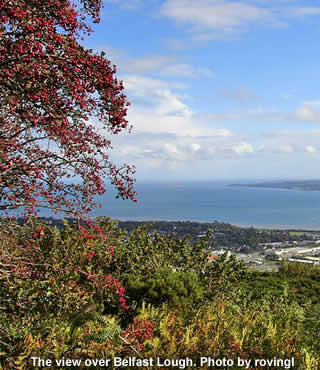 |
|||
A nature reserve and shipping lane that's the key to Belfast's success |
||||||
Listen to this article |
||||||
|
||||||
Belfast Lough is an expanse of water on Northern Ireland's eastern side. It looks almost as if someone's cut a pizza-shaped slice out of the country. At the tip is Belfast, the nation's capital. The city's location at the edge of the Lough played a huge part in its growth as a settlement. |
||||||
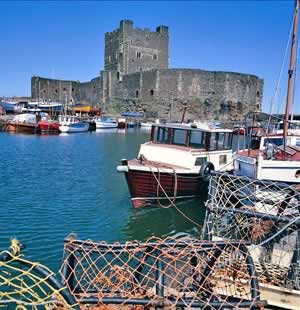 Carrickfergus Castle overlooking Belfast Lough Photo Northen Ireland Tourist Board |
||||||
The water is spacious and virtually free of dangerous tides. This makes it perfect for boats and ships of all sizes. In past centuries it would have been teeming with sailors, fishermen and traders, which all helped transform Northern Ireland's capital into one of the wealthiest and most important ports in the world. |
||||||
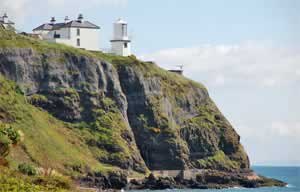 Blackhead Lighthouse, built in 1901 and one of three lighthouses in Belfast Lough. Photo Aubrey Dale |
||||||
In 1912, the Lough was crossed by the most famous ship ever built. Namely the Titanic, once claimed to be unsinkable and later proved to be very sinkable indeed. It was constructed right here in Belfast, at the Harland and Wolff shipyard. Whilst they no longer build vessels on that scale, the company is still operational today. |
||||||
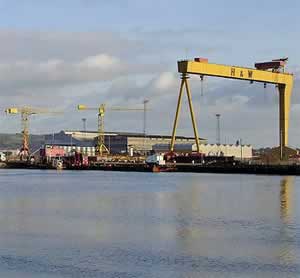 Harland and Wolff Shipyard, Belfast Photo rovingI |
||||||
The city's status as a port declined somewhat in the 20th century. Even so, the harbour is still a valuable part of Belfast. In recent years it has begun a dramatic transformation into a modern retail and entertainment area, brimming with restaurants and shops. |
||||||
However, you can still see plenty of boats out on the Lough's surface. Many of these belong to the local sailing or yacht clubs. There are dozens dotted along the shoreline, each with their own events and competitions. With 30 square miles of calm, open water, this is a perfect place for races. |
||||||
 Photo Northern Ireland Tourist Board |
||||||
Despite the ideal conditions, some vessels have been known to meet an unfortunate fate. On clear days, when the visibility's good, you can look down into the water and catch a glimpse of the countless wrecks of unlucky ships. There are craft of all different ages and types, scattered on the Lough bed. Adventurous divers often head down to explore. There are sites as deep as 60 metres, and some as shallow as just 10. This means that even beginners can investigate a shipwreck if they choose. If you get a taste for it, there are plenty more to see. Over 400 named wrecks lie off Northern Ireland's coast - and there are probably many more we don't yet know about. |
||||||
Of course, there's lots to see on the water's surface, too. Much of it is part of the Belfast Lough Nature Reserve. The inland mudflats are particularly important, as they're a feeding area for hundreds of beautiful wildfowl and wading birds. The best time to catch sight of them is at high tide, and the best places to wait are inside the outdoor hides, operated by the Royal Society for the Protection of Birds. Their facility also offers an observation room and an information centre. |
||||||
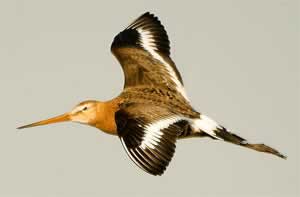 Black Tailed Godwit, more than 1,000 of them pass through on their way to Iceland every Spring! Photo Hans Hillewaert |
||||||
It's strange that such a quiet area, full of plants and wildlife, should exist so close to a major city. It’s a part of Belfast that is often overlooked, but one well worth seeing. |
||||||
|
||||||
|
||||||
Carrickfergus Castle is open daily, 10am to 6pm (4pm in winter). Entry costs around £4 for adults, £2 children. Carrickfergus Castle, Marine Highway, Carrickfergus, BT38 7BG. Tel: 028 9335 1273 |
||||||
Belfast Lough Nature Reserve Observation Room is open Tuesday to Saturday, 9am to 5pm, plus Sundays 1pm to 5pm, Closed Mondays. Entry is FREE. The reserve is located within Belfast Harbour Estate and signposted signposted along the A2 (Belfast to Holywood dual carriageway). Tel: 02890 461458 |
||||||
Crawfordsburn Country Park is open from 9am to 5pm (later in summer). Admission is free. It's off the B20 at Helen's Bay. NI Environment Agency: 028 9185 3621 |
||||||
|
Pocket Britain is optimised for use on a smartphone or tablet with internet access. All content is subject to copyright. All reasonable methods have been used to ensure information supplied is accurate at the time of publication. However, it is advisable to check information before relying on it. Privacy Policy |